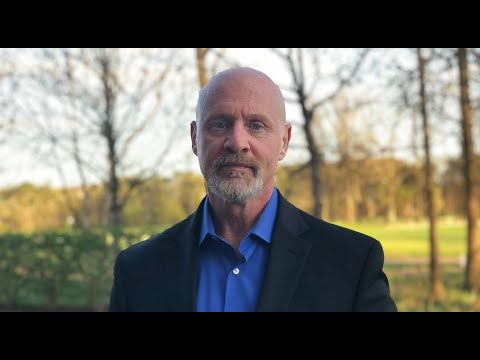We’ve tracked down the PM’s university thesis on the Christian Brethren Assemblies. So, what does it reveal of the younger Morrison?
Most of us would hate to be confronted with the words we wrote as a 21-year-old. But in the case of Scott Morrison one imagines he might be pleased with the young religious marketer he would see in his university thesis. As it turns out, Morrison PM has not much changed.
Inq has tracked down Morrison’s thesis, which he wrote for his Bachelor of Science honours degree at the University of NSW in 1989. It is housed at the University of Manchester in a specialist library dedicated to writings on the Christian Brethren Assemblies, also known as the Plymouth Brethren.
We revealed its existence a few weeks ago but were unable to see it for ourselves until Manchester Library came out of lockdown with the rest of the UK.
So, what does the 154-page thesis reveal of the younger Morrison?

Possibly the most telling thing of all is that a 21-year-old might devote months of his life digging deep into a highly conservative religious movement, known primarily for its strict male-dominated hierarchy and its unwillingness to engage openly with the outside world. For example, the Exclusive Brethren have tight rules restricting marriage to other Brethren and limiting the work Brethren women can do. The other variant, the Open Brethren, are less isolationist but they are socially conservative. They also believe in evangelising their religion. As a teenager Morrison had attended the Brethren church before moving to the local Baptist church.
Morrison’s thesis is billed as a “micro approach” to the relationship between religion and society, using an examination of the Christian Brethren Assemblies of Sydney as the example. To this Morrison applies both “parametric (principal components analysis) and non-parametric (Spearman’s correlation and chi-square) statistical procedures”. So far so good in terms of applying a scientific approach to his chosen field of economic geography.
But at a certain point early in the thesis, Morrison’s scientific analysis veers into something much more akin to a marketing manifesto for a church struggling to retain its numbers. The scientific “micro-approach” suddenly takes on the shape of a consultant’s strategic advice.
Morrison, the keen-as-mustard young Christian student, has plenty of ideas about how the church can increase its influence in society and lift its “growth performance”.
The assemblies, he finds, are in a period of transition. They should not be “overconfident” of any gains they might make because they had actually “experienced a net loss to other denominations”.
Morrison’s demographic analysis showed that the brethren assemblies in Sydney had “failed to relate” to large sections of the metropolitan community, particularly “those employed in blue-collar occupations, the unemployed, those without tertiary qualifications and those born overseas”. Here, with numbers charting the demographic ebb and flow, was a political campaign strategist in the making.
What to do? Go for growth
Morrison’s view was that assemblies should “maintain the standard and emphasis placed upon Bible teaching” in their assemblies but that they “must realise” that this alone “will not bring about growth” — “visitation” and “counselling” were also important.
He warned that the impression of the church as “a white-collar institution” would only become further entrenched.
Morrison’s primary prescription was to go for growth by engaging in more “bridge-building” activities into the community.
Morrison as the young evangelist commends the work of influential American Christian Jim Petersen, in particular his book Evangelism For Our Generation, which documented “a style of evangelism which is receiving an increasing amount of attention around the world today”.
(Petersen has had decades working with those he calls “the unchurched”, passing on the secrets of how to develop relationships with “the unreached”, model the Christian message and “present the Bible’s claims in a non-threatening manner”.)
Petersen’s approach included “church planting”, which was already being done in Sydney’s western suburbs and in the suburbs surrounding Brisbane by assembly “church planting” workers.
Critically, though, it also involved church members taking up an active role in the community in activities such as “P&C associations, neighbourhood watch, sporting clubs, local interest groups and other such community-based organisations and activities”.
“The idea of this approach is to restore the interpersonal component to evangelism. It has been described as ‘bringing the church to the people’ whereas past approaches have involved bringing people to the church. It attempts to personalise what has often been seen by the community as an abstract or irrelevant institution,” Morrison concluded.
This would lead to “church growth, particularly through conversion”.
In Morrison’s thesis are the seeds of the politician to come. Science, in the form of demographic data, is used to build a strategy to build support. Politics? Religion? Heck, what’s the difference when it comes to getting the numbers.
But the crucial insight is perhaps to do with a Morrison characteristic on show in his recent address to the Australian Christian Churches National Conference: his belief in meshing church and community. Indeed, more than 30 years on, the conservative Christian Brethren remained an exemplar for Morrison as PM. This is what he told his Pentecostal audience:
“At every church people say to me, ‘what church do you go to?’, I say ‘Horizon Church, used to be known as Shirelive Church’. You know other churches, there are Baptist churches, there are Brethren churches, I’ve always been at a community church. That’s where I want to be, and a church that believes in community and creates community. And the essence of community is each individual understanding that they’re valued, that they’re unique. That they can respect one another. That they can contribute to one another.”
And as Jenny Morrison received the PM’s acknowledgement at the conference for her support role, so it was in 1989. Jenny Warren, Morrison’s soon-to-be wife, is acknowledged for giving her “total support throughout the project” assisting primarily “in the undertaking of surveys”.

And to show how little changes in Morrison’s world of faith and family, he also acknowledged the help of his mother Marion and father John — Marion for typing his thesis and John for providing the computer and software.
Inq was also curious to know what Morrison’s supervisor Professor Ian Burnley made of a bachelor of science honours thesis that ended up with the character of a marketing strategy for a conservative Christian group. Burnley, who has a long list of publications on migration patterns in Australia, has retired. We left messages with his last known academic address at the UNSW’s City Futures Research Centre but we’ve had no response.
What’s clear, however, is Morrison ultimately took his own advice, moving from the Brethren church to the Baptist church and finally landing with the Pentecostal church, run by people very aware of the imperative to “bring the church to the people”.

Help us keep up the fight
Get Crikey for just $1 a week and support our journalists’ important work of uncovering the hypocrisies that infest our corridors of power.
If you haven’t joined us yet, subscribe today and get your first 12 weeks for $12.
Cancel anytime.
Peter Fray
Editor-in-chief of Crikey








